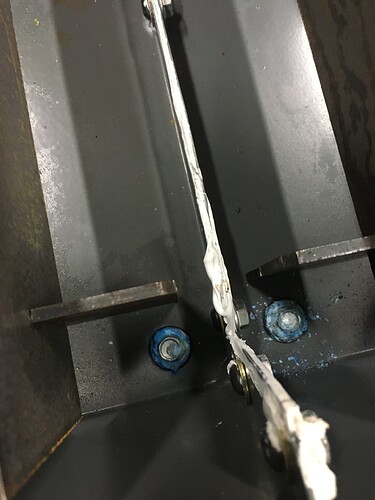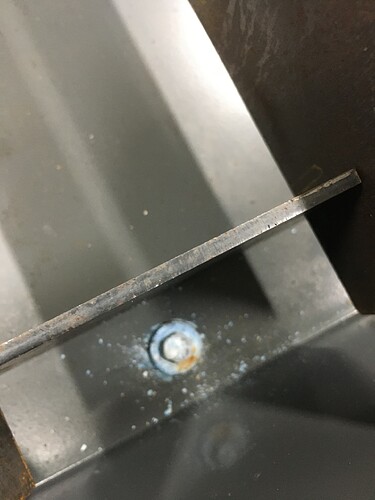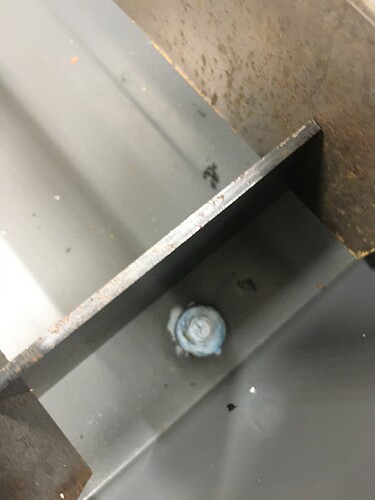Wondering if anyone else is seeing this?
I drain the table when done using it. Saw this first time after draining it. I sent this to Sterling Cool and they were going to get back with me, but have not heard back.
Looks like electrolysis. Galvanic action on the screws. Been using Sterling Cool for a long time without any corrosion like that. Are the screws and washers stainless?
I don’t think so they were the ones that came with the table pretty sure there zinc
Stainless is very low on the galvanic chart. Steel or zinc is very high on the chart. When electric current is introduced into the fluild it amplifies the electrolysis. In other words the steel becomes sacrificial and starts corrode. Replace them with a ss version and your problem will be gone.
It also raises the question where he’s putting the work clamp. And if the work clamp is partially submerged in the water. Ideally you wouldn’t be running any current through the water at all.
I think electrolysis is a very good bet but they’re also could be some other chemical interaction between the zinc and the Sterling cool fluid.
Work clamp was partially submerged.
Don’t see how that matters slats sit in water and touch grounded part. Has everyone switched there water table screws to stainless?
Weird thing this happened very quickly, filled the table while I was finishing up my drain tank let it sit a hour or so then drained back out. And come to think of it did not even has the plasma cutter hooked up at that time.
Electricity takes the lease path of resistance.
So if you have the work clamp on the material the shortest path is between the arc directly through the material and to the work clamp.
If you “ground” clamp on the slats it’s lowest path of resistance is through the material and wherever it touches the material and the slats then through that portion of the slats to the work clamp.
It changes the path of the circuit.
And through the slats will always be the higher resistance one.
Maybe just a chemical reaction between that cutting fluid and zinc?
How many parts Sterling cool to how many parts water is your current mix?
Its attacking the zinc coating on the screw. Your slates are being coated with Sterling cool. I agree its a weird problem. If it was the sterling cool it would doing it to all the steel. Maybe Langmuir has come across this problem before? I mix mine like the pail says. My table has an earth ground rod to dissipate
any stray EMI. Maybe thats the answer why mine has never done that.
If one of you made up a mix of Sterling cool and bought some zinc-coated fasteners from the hardware store . Then put the fasteners in to see what would happen without an arc as a control.
I’ll do it today. Let you know the results in the next few days.
The zinc plating on the screws is acting as a sacrificial anode to the bare steel slates in the galvanic process (due to salt in the plasma mixture). Nothing to worry about. Under the zinc is bare steel which wont corrode in sterling cool.
The test experiment is under way. Correctly mixed Sterling Cool and several different Zinc screws.
Let you know the results.
These kind of practical tests are fun.
Should I run 480 v Three phase through it? ![]()
Make sure you throw some bare steel on there too.
You got it.
Put it at the center of a three phase star configuration.
Electrolysis doesn’t work very good with AC either. ![]()
Should still be spectacular…
Maybe some zinc coated parts by themselves in one container.
And maybe zinc coated and bare steel in another.
Just so we end up with a true control
If we just have one zinc part in that container the chance of accidental electrolysis occurring would be very low if not zero.
There shouldn’t be any electrolytic solution between the zinc and the steel bolt.
No problem done!


